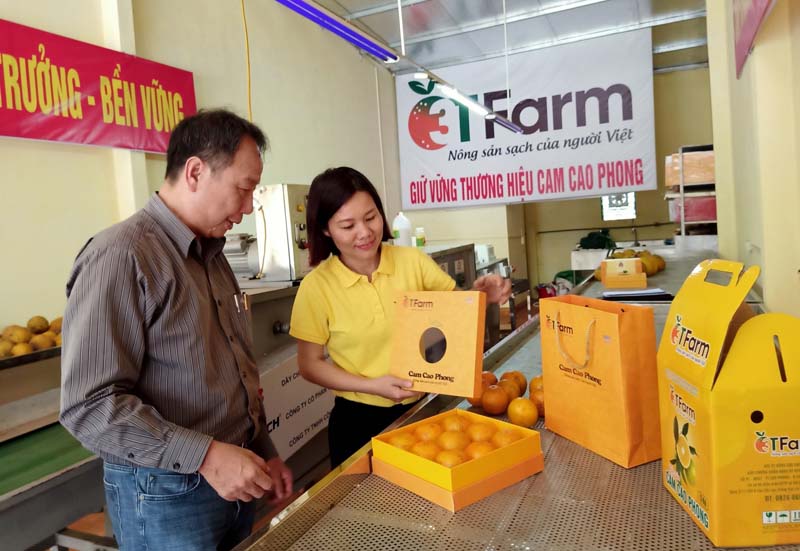
(HBO) - After ten years (2010-2020) of implementing the new-style rural building programme, Hoa Binh’s rural areas have been given a facelift. By the end of 2019, 88 out of 191 communes, or 46 percent, were recognized as new-style rural areas. On average, each commune fulfills 15.1 criteria of the programme.

The cultural house of
Yen Nghiep commune in Lac Son district has been constructed in line with
standards, becoming a meeting place for locals.
A decade of mobilizing all resources for new-style rural
building positively changed the landscape and environment and improved
infrastructure, meeting local demand for socio-economic development. The rate
of localities meeting new-style rural criteria also rose.
During the period, the entire province mobilized 21.2 trillion
VND (917.98 million USD). Of the total, only 6.3 percent were sourced from the central
budget, and the remainder came from donations of locals, enterprises, and
credit institutions, among others.
With the fund, over 4,000 km of rural roads were cemented,
while nearly 800 km of canals and ditches were upgraded. Hoa Binh also built
over 500 educational facilities, 700 cultural infrastructure works, 80 rural
markets, and 80 health facilities, among others.
Coming to new-style rural communes nowadays, we can see
farmers talking about doing business and increasing living standards
everywhere. The programme is most effective in creating consensus and
solidarity among residents so that they help each other in reducing poverty. In
communes meeting the standards or being close to achieve them, a host of models
and projects for production growth, human resources training and technology
transfer have been implemented to help farmers expand production./.
The Standing Board of the Hoa Binh provincial Party Committee has agreed in principle on a proposal by the Standing Board of the Party Committee of Hoa Binh city to gather feedback on the city’s 1:2000 zoning plan, which forms part of its broader urban development strategy.
Hoa Binh province has made notable progress in public administration reform and digital government development, with the satisfaction index among citizens and businesses reaching over 84%, according to recent government evaluations.
Thanks to great efforts by local authorities in recent times, the governance and public administration performance of Mai Chau district has been significantly improved.
In the afternoon of June 6, the Party Committee, the People's Council, the People's Committee and the Fatherland Front of Lac Son district solemnly held a meeting to celebrate the 139th anniversary of the district's founding (1886–2025) and the 79th anniversary of the establishment of the district's Party Committee (1946–2025). There was the attendance of Mr. Bui Van Thang, the Vice Chairman of the Provincial People's Council; Mr. Quach Tat Liem, the Vice Chairman of the Provincial People's Committee; Ms. Dang Bich Ngoc, the Deputy Head of the National Assembly Delegation of the province; as well as the former leaders of the province and district through various periods, who are the natives of the district.
Implementing the Politburo’s Resolution No. 57-NQ/TW on breakthroughs in science – technology, innovation, and digital transformation is a golden opportunity for the northern mountainous province of Hoa Binh to renew growth model, improve competitive edge and shorten digital gap.
Resolution 57-NQ/TW, issued by the Politburo on December 22, 2024, identifies sci-tech, innovation, and digital transformation as strategic breakthroughs to build a developed and prosperous nation. In Hoa Binh province, this spirit is not just a slogan, it’s being put into action through concrete initiatives that form a "new development triangle”: digital citizenship, digital economy, and digital administration.



